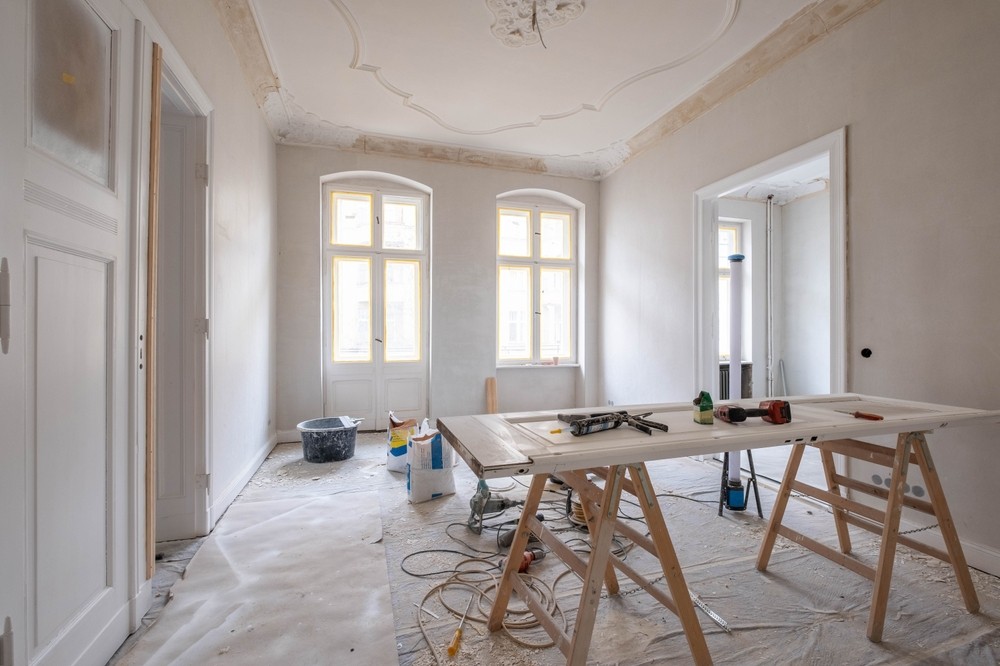Owning a home offers an unparalleled sense of accomplishment and security. Yet, for many homeowners, the desire to remodel or renovate is ever-present, fueled by the potential to transform a space into a personal haven. While renovations can undoubtedly elevate the functionality and aesthetics of a home, they often come with unforeseen costs that can quickly escalate a seemingly straightforward project into a financial headache. Below, we explore the often-overlooked expenses that can balloon the cost of home renovations, helping you to budget more effectively and avoid future surprises.
Overestimating DIY Abilities
Many homeowners embark on home renovation journeys with the optimism of saving money through Do-It-Yourself (DIY) projects. While the idea of handling renovations independently can be enticing, overestimating one’s DIY capabilities can lead to costly mistakes. Tasks such as plumbing, electrical work, and structural changes require specialized skills that if improperly executed, can result in severe issues and expensive repairs.
DIY errors might necessitate hiring professionals later to fix or complete the job, adding to the cost and potentially undoing previous work. Additionally, the time investment for a DIY project can be significant, impacting daily life and potentially leading to errors made in haste. It’s essential to realistically assess your skillset and understand when to call in the experts.
Unplanned Structural Changes
When embarking on a renovation, many homeowners focus on aesthetic changes without considering underlying structural implications. However, unexpected structural changes during renovations can drastically inflate costs. For example, replacing a wall might reveal that it’s load-bearing, necessitating additional structural support that wasn’t in the initial budget.
Similarly, updates to plumbing, heating, and electrical systems often reveal hidden problems, such as outdated wiring or rusted pipes, that must be addressed to meet current standards. Engaging a professional for a thorough inspection before commencing your renovation project is crucial as it can help uncover potential structural issues early on.
Permits and Regulations
Another commonly overlooked expense is the cost of permits and adhering to local regulations. Many renovation projects, particularly those involving structural changes or major system upgrades, require permits from local authorities. The cost of these permits can vary significantly, depending on the scope and location of the project.
Failure to obtain necessary permits can result in fines, legal issues, and even forced removal of work completed. Adhering to local building codes and regulations is vital not only to avoid penalties but also to ensure your safety and that of your home. Consulting with local authorities or a renovation specialist can provide insights into required permits and associated costs.
Inflated Material Costs
Material costs are a significant component of any renovation budget, and they can often fluctuate based on market conditions, availability, and location. Inadequate research or last-minute decisions on materials can lead to overspending. Moreover, opting for cheaper materials can prove costly in the long run if they require frequent repairs or replacement.
Consider long-term durability and maintenance when selecting materials, and ensure you have allotted for potential price increases or shortages. It can be beneficial to purchase materials with a nuanced understanding of seasonal trends or global demand that might affect pricing.
Labor Charges
The cost of hiring skilled labor can be another overlooked factor in renovation budgets. The complexity and scope of a project can greatly affect labor costs, and working with experienced professionals often comes at a premium. Hidden expenses may also arise if initial assessments do not reveal the full scope of work required.
Additionally, unexpected delays, such as inclement weather or unavailability of materials, can lead to increased labor costs as contractors require more time to complete the project. It is crucial to obtain detailed quotes and contracts from contractors that outline labor costs and to include a contingency fund for unexpected delays.
Temporary Accommodation and Logistics
During major renovations, staying in the home might not be feasible due to dust, noise, and safety issues. Many homeowners overlook the cost of temporary housing or renting storage for belongings. Hotel stays or short-term rental properties can add substantial additional expenses, particularly for extended renovation projects.
Logistical challenges, such as moving furniture, securing possessions, and managing deliveries, also add layers of complexity and cost to renovations. Factoring in these potential costs when planning a budget can prevent financial strain partway through the renovation process.
Changing Needs and Preferences
The renovation process often takes longer than anticipated, during which preferences and lifestyle needs may evolve. Mid-project changes can arise from a desire for additional features or upgraded finishes. While seemingly small, these changes can cause costs to spike as they may involve returning materials, altering designs, or additional labor.
To prevent such scenarios, it’s crucial to finalize decisions in advance and stick to them as closely as possible. Allow for a small contingency in your budget for minor changes but be wary of major mid-project shifts that can derail both your timeline and financial plans.
Underestimating Timeframes
Renovation timelines are notoriously unpredictable, and underestimating the time required for project completion can have financial ramifications. Longer timeframes not only increase the budget due to extended labor costs but also inconvenience daily life, especially if arrangements for alternative accommodation are in place.
Disruptions to regular household activities may also lead to increased dining out or additional childcare costs, further impacting the budget. Set realistic expectations with contractors about the timeline and maintain ongoing communication to mitigate potential delays.
Impact on Property Values
While renovations are primarily a pursuit of personal satisfaction and comfort, it’s worth noting that not all renovations yield the same return on investment when it comes time to sell. Over-improvement, or customizing too specifically to taste without regard for broad appeal, can limit potential buyer interest and affect property resale value.
Consider enlisting a real estate professional to evaluate which home improvements would add the most value and are consistent with local market trends. Aligning renovations with buyer expectations can help maximize future returns and prevent overcapitalization.
In summary, while home renovations can transform spaces and enhance living environments, they come with a myriad of hidden costs that are often underestimated. From initial planning through to execution, staying informed about potential expenses—including the sometimes overlooked aspects detailed above—ensures a more accurate budget and a smoother renovation process. For any homeowner ready to take on a renovation project, understanding the total cost beyond the initial enthusiasm is key to a rewarding and financially sound outcome.



